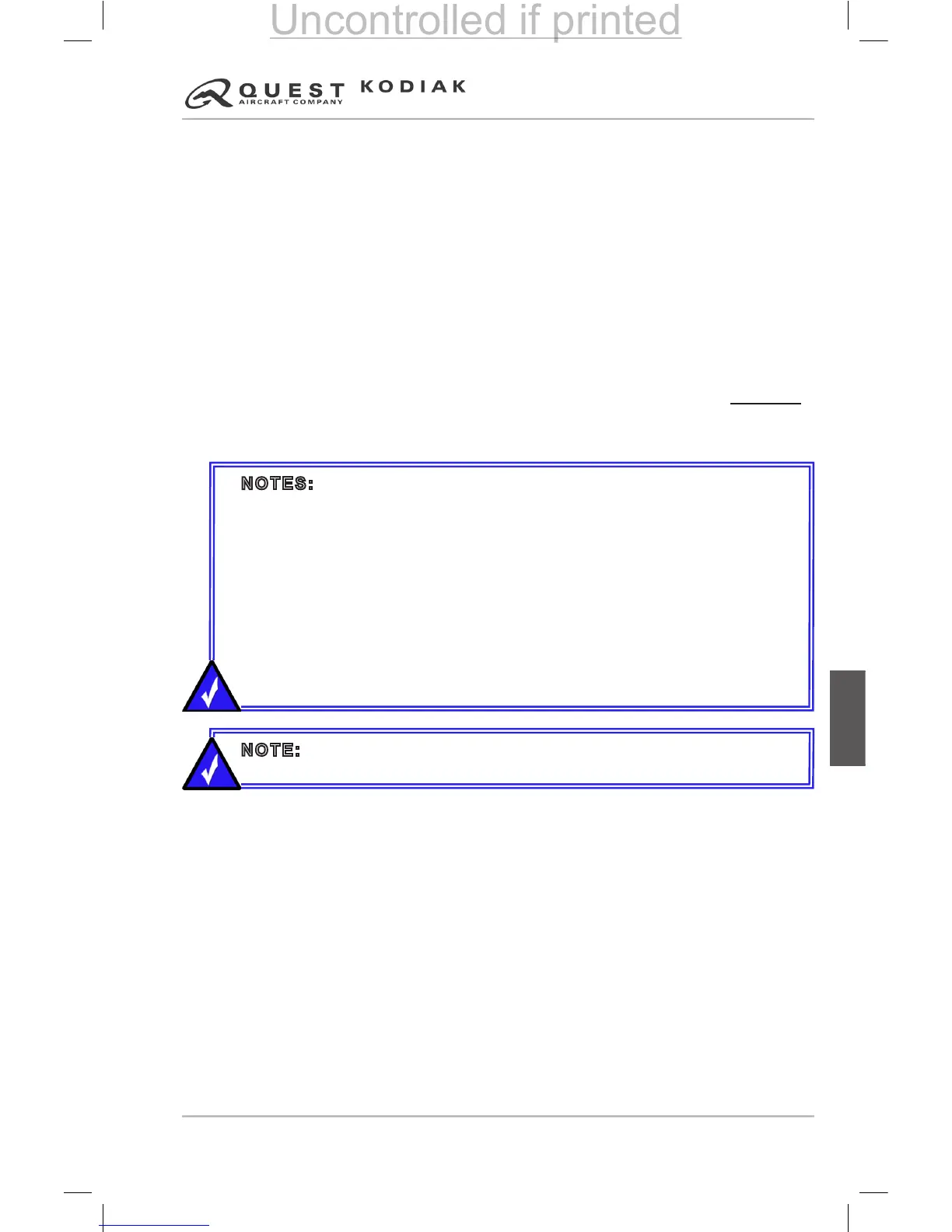BALKED LANDING CLIMB GRADIENT
(Refer to the tables on the following page)
Conditions:
Power
........................................................................................Max Takeoff
Flaps
........................................................................................... 35° (Down)
Climb Airspeed
................................................................................74 KIAS
Winds
....................................................................................................Zero
Air Conditioning
....................................................................................... Off
Example:
Outside Air Temp
.................................................................................. 20°C
Weight
..................................................................................... 6690 pounds
Pressure Altitude
........................................................................... 6000 feet
Climb Airspeed: 74 KIAS
Climb Gradient: 558 FT/NM
NOTES:
• Balked Landing Climb Gradients shown represent the gain in altitude
for the horizontal distance traveled and is expressed as Feet per
Nautical Mile.
• For operation in air colder than provided in this table, use the coldest
charted data.
• This chart is required data for aircraft certication. However,
signicantly better performance may be achieved by climbing at the
Best Rate of Climb speeds with the aps positioned at 20° or following
the Go-Around / Balked Landing procedure outlined in “Section 4.”
• Dashed entries correspond to outside air temperatures beyond the
aircraft operating limits.
NOTE: Blue numbers indicate performance with Air Conditioning
ON, black numbers indicate performance with Air Conditioning OFF.
